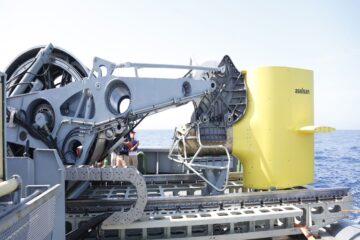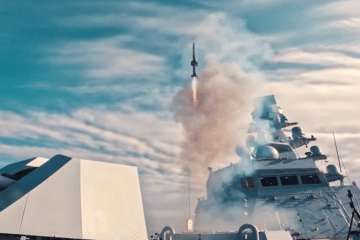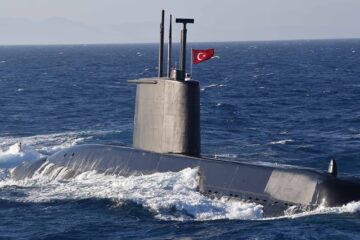According to the Turkish Presidency’s Communications Directorate, the meeting discussed issues related to the expansion of indigenous systems used by the Turkish Armed Forces (TAF) and security units and made decisions on 25 different projects.
One of the most important issues of the meeting was the approval for the construction of three Istanbul-class (I-class) frigates for the Turkish Navy. The lead ship of the class, the future TCG Istanbul, was launched in January 2021, and the first indigenous frigate is scheduled to enter service for the Turkish Navy in 2023.
“The procurement of the 6th, 7th, and 8th ships to be built under the MİLGEM project (2nd, 3rd, and 4th I-class frigates) was approved at today’s meeting of the Defense Industry Executive Committee.”
Defense Industry Executive Committee announcement
During the IDEF 2021 exhibition held in Istanbul in August 2021, the head of the Turkish Defense Agency, Ismail Demir, stated that the procurement of the following three I-class frigates will be carried out soon and that private shipyards are being considered for the construction of the following ships.
The committee also approved mass production of the ATMACA anti-ship missile and AKYA heavy torpedo, and discussed new capabilities to be added to the unmanned platforms.
About I-Class (Istif-class) Frigate

The I-class Frigate Program was launched to construct four frigates to replace aging YAVUZ-class Frigates in the mid-2020s. Developed under the MILGEM indigenous warship program, the Istanbul class is an enlarged variant of the Ada-class anti-submarine corvette. The I-class Frigates will have around 50% increased fuel capacity and operational/sailing range capability compared to Ada-class Corvettes.
The I-class frigates have the configuration to conduct detection, determination of position, classification, identification, and destruction of the target and NGFS. The I-class Frigate is designed to conduct maritime surveillance and patrol operations, inspection, and surveillance of EEZ besides preventing potential threats.
Specifications:
| Length Overall | : 113.2 meters |
| Length Waterline | : 105.2 meters |
| Beam Max | : 14.4 meters |
| Draught | : 4.05 meters |
| Displacement | : 3000 tons |
| Maximum Speed | : 29+ knots |
| Cruise Speed | : 14 knots |
| Endurance | : 5700 Nm at 14 knots |
| Main Propulsion | : CODAG (2xMTU Diesel engines + 1xLM2500 gas turbine) 2x shafts and CPP propellers |
| Power Generation | : 4 x 560kw diesel generator |
| CMS | : HAVELSAN ADVENT |
| Sensor Suit | : – 3D radar (Probably Aselsan CENK-S AESA*) – Navigation radar (Probably Aselsan ALPER-P LPI*) – Fire Control Radars (2xAKR-D Fire Control radars*) – EO Systems (Probably ASELFLIR-300T, PIRI KATS, and AHTAPOT*) – FERSAH hull-mounted sonar – HIZIR Torpedo Countermeasures System – Laser warning system – ASELSAN ARES family ESM/ECM |
| Weapons | : – 16-cell MIDLAS indigenous VLS for launching HISAR family of surface-to-air missiles – 4×4 ATMACA anti-ship missiles – Aselsan Gokdeniz CIWS** – 76 mm Super Rapid Gun – 2 x 25 mm Aselsan STOP machine gun – 2×3 Lightweight torpedo (MK-46 Mod 5 / Roketsan ORKA) |
** Several Turkish media outlets claim that Phalanx Baseline-2 CIWS will be fitted, but the mockups carry GOKDENIZ






